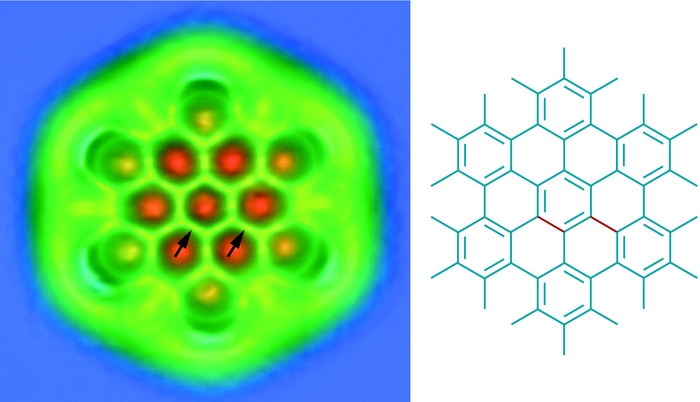Advertisement
Grab your lab coat. Let's get started
Welcome!
Welcome!
Create an account below to get 6 C&EN articles per month, receive newsletters and more - all free.
It seems this is your first time logging in online. Please enter the following information to continue.
As an ACS member you automatically get access to this site. All we need is few more details to create your reading experience.
Not you? Sign in with a different account.
Not you? Sign in with a different account.
ERROR 1
ERROR 1
ERROR 2
ERROR 2
ERROR 2
ERROR 2
ERROR 2
Password and Confirm password must match.
If you have an ACS member number, please enter it here so we can link this account to your membership. (optional)
ERROR 2
ACS values your privacy. By submitting your information, you are gaining access to C&EN and subscribing to our weekly newsletter. We use the information you provide to make your reading experience better, and we will never sell your data to third party members.
Synthesis
Olefin Metathesis on Metal Surfaces
New methods broaden range of chemical reactions on electrodes
by Mitch Jacoby
July 25, 2005
| A version of this story appeared in
Volume 83, Issue 30
SURFACE CHEMISTRY
New methods broaden range of chemical reactions on electrodes
A textbook chapter's worth of organic reactions have just been moved within reach of surface chemists studying molecular electronics and nanoscale devices. In separate studies, researchers in Canada and the U.S. have demonstrated procedures for carrying out olefin metathesis reactions on the surface of metals (Science 2005, 309, 588 and 591).
Some methods for connecting molecules to electrodes, such as the one involving gold-thiol linkages, have been employed successfully in many laboratories. But if more general methods for making robust contacts between metal atoms and a variety of molecules were available to scientists, a wider range of functionalized surfaces could be prepared, and new types of molecular devices might follow. The latest studies take a step in that direction.
In one of the investigations, chemistry professor Peter McBreen and graduate student Mohamed Siaj of Laval University, in Quebec, show that a variety of molecules can be attached to individual metal atoms on surfaces via double bonds and that the products can be transformed in subsequent reactions.
By reacting cyclopentanone with the surface of -molybdenum carbide (-Mo2C), an electrically conducting material, the Laval group prepared a surface with cyclopentylidene groups doubly bonded to individual molybdenum atoms. Then, by exposing the surface to propene, the team caused cross-metathesis reactions to occur between the surface-bound and gas-phase doubly bonded species.
Using vibrational spectroscopy methods and mass spectrometry, McBreen and Siaj identified two pairs of key products: Mo-methylidene and cyclopentane ethylidene, and Mo-ethylidene and cyclopentane methylidene.
The Laval group also carried out ring-opening metathesis polymerizations on -Mo2C functionalized with cyclopentylidene groups. In that part of the study, the team initiated molecular chain growth by reacting the surface with cyclopentene--and in a separate reaction, with norbornene.
In the other study, Columbia University chemistry professor Colin Nuckolls, grad student George S. Tulevski, research scientist Michael L. Steigerwald, and their coworkers demonstrate that derivatized ruthenium surfaces can be used to catalyze olefin metathesis reactions.
Specifically, the Columbia team treated ruthenium films with 4-bromophenyldiazomethane--and separately with trimethylsilyldiazomethane--to prepare two types of derivatized surfaces featuring molecules that are multiply bonded to ruthenium. Then in separate reactions, each type of derivatized surface is converted to the other type using olefinic reagents in cross-metathesis reactions. The team reports that the products remain stable upon exposure to oxygen, moisture, and various solvents.
On the basis of quantum mechanical calculations, Nuckolls and coworkers conclude that the energy level of the 1⁄4-orbital system in molecular wires, which could be grown through ring-opening reactions using conjugated molecules, would match well with ruthenium's d orbitals. The orbital overlap looks promising as a high-conductance link between the metal and the molecule, they say.





Join the conversation
Contact the reporter
Submit a Letter to the Editor for publication
Engage with us on Twitter